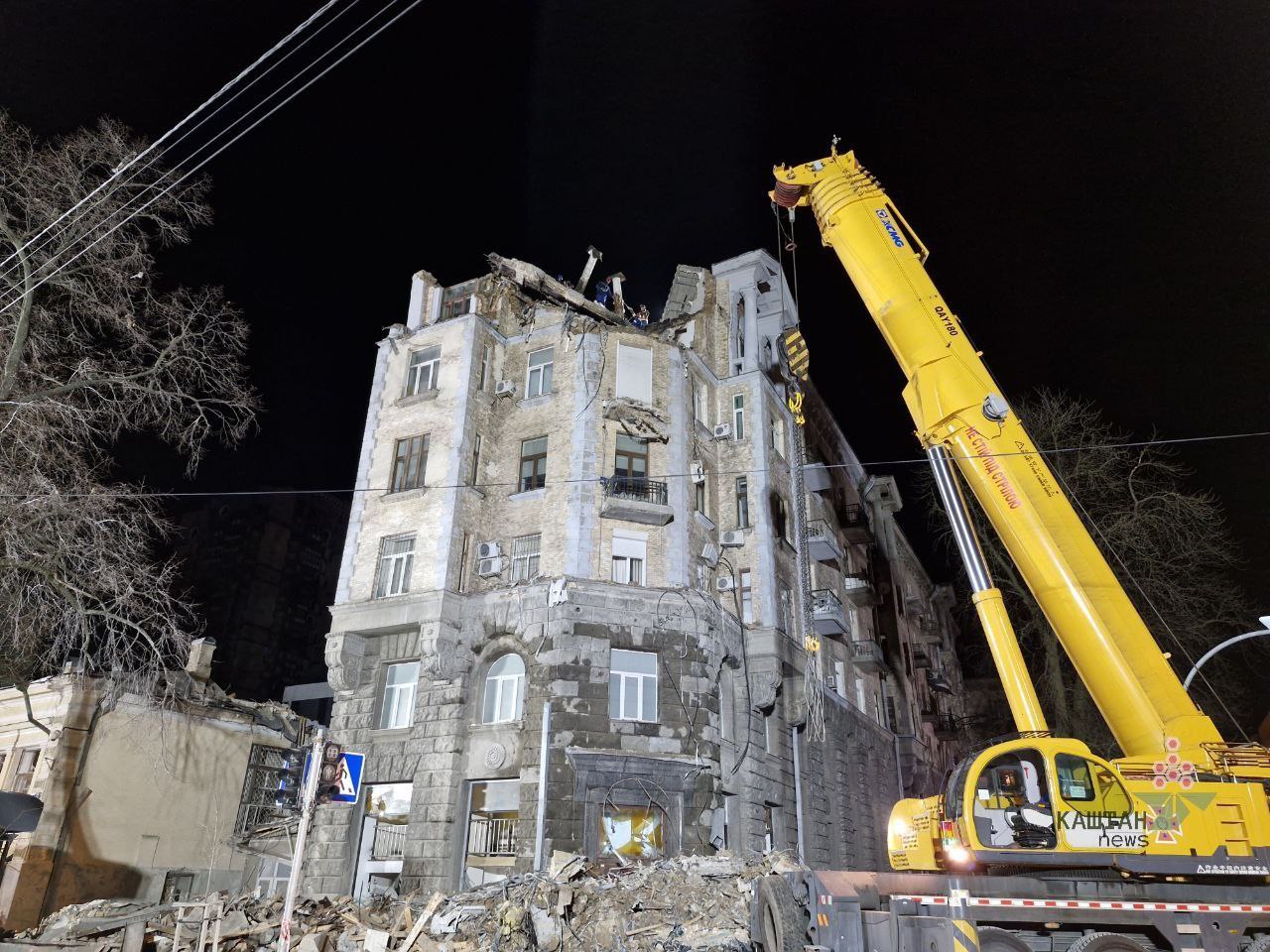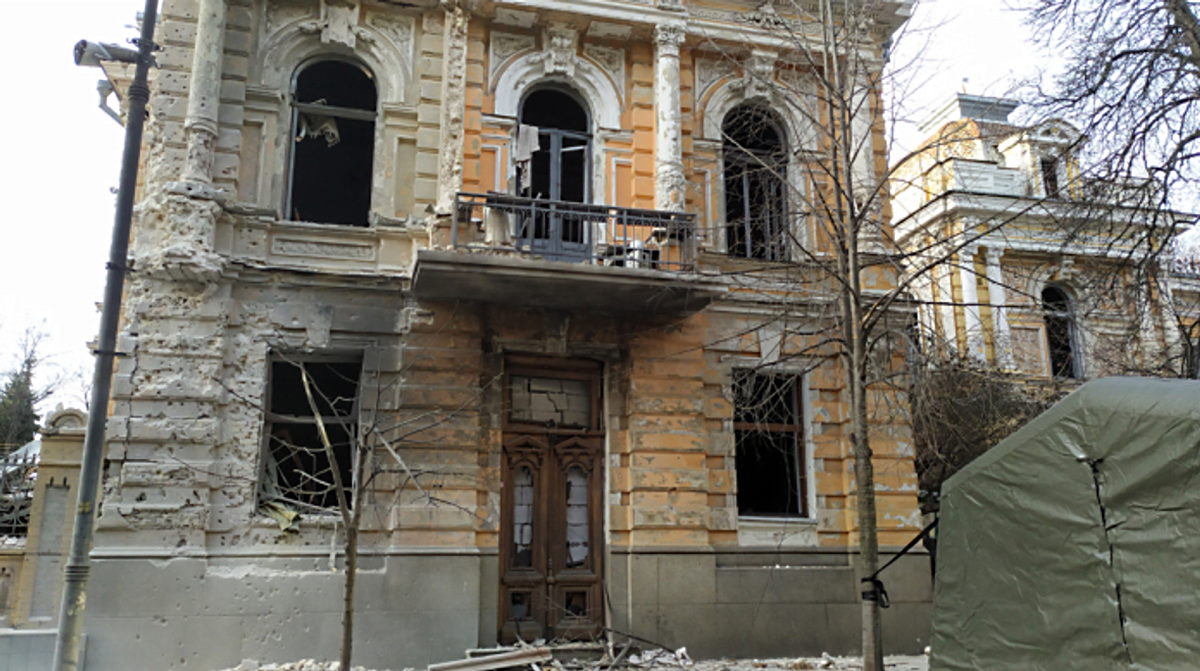As a result of a massive attack by the Russians using drones in the Pechersk district of Kyiv on the morning of January 1, 17 buildings suffered various damages.
Among them are office spaces, the building of the National Bank of Ukraine, an educational institution, as well as residential buildings, where over 250 apartments were damaged. Of these structures, three are officially recognized as monuments, each of which has sustained damage and requires restoration or reconstruction.
Kashтан NEWS investigated how severe the damage to the buildings is and whether the Kyiv authorities can restore them to their original condition.
 7
7 “Residents” of one street
Ironically, all three buildings that suffered significant damage are officially recognized as historical, architectural, and urban planning monuments and are located at the beginning of Bankova Street. These include the Writers' House, or the Liberman estate, the House of the Council of People's Commissars (now a residential building), and the Brodsky estate.
The Writers' House
“In the Liberman estate, the explosion damaged the ornamental stucco both outside and inside the building,” says Kyiv heritage protector Dmytro Perov.
It is worth noting, he continued, that the interior decor of the premises was quite exquisite, but due to the blast wave, it has partially sagged and cracked. Therefore, it requires comprehensive restoration work.
 8
8 Additionally, the original window fittings, which have remained intact since the building's construction, were also damaged. And, worse still, the unique mechanisms for opening and closing the windows were harmed. Since the house has quite high ceilings, specialists of that time developed and installed special, albeit simple, but effective and reliable mechanisms to facilitate window use during ventilation.
Interior elements that also preserved their original appearance have been damaged.
 9
9 At the same time, an enemy drone destroyed several chandeliers made in the late 19th to early 20th centuries. The unique tiles that line the stoves in the rooms were also damaged.
Considering the current condition of the building, Dmytro Perov notes that conservation work must be carried out first. In certain places, there is no glass or window frames at all. Rain, snow, temperature fluctuations, and wind will negatively impact the monument.
 0
0 “There is a unique interior, furniture that is not typical for Kyiv estates today,” the activist emphasized.
Dmytro Perov added that from the outside, besides the stucco, two columns were damaged. All of this will also need to be restored.
The House with the Tower
The House of the Council of People's Commissars, built between 1937 and 1941, completely lost floors 4-6 due to the Russian attack. Given this, conservation work is also necessary there. The drone strike hit the observation tower, which was completely destroyed. This has opened access for atmospheric air and precipitation to the internal parts and structures of the building.
 1
1 According to Perov, the destroyed tower will need to be rebuilt “from scratch” in the volumetric-spatial form it existed in before the enemy projectile hit it.
“The tower is a certain architectural accent of the entire ensemble of the building, and without it, we will see a completely different architectural character of the street, and we will lose its original charm,” the interlocutor stated.
The House of the Sugar Magnate
Significant damage, Perov continued, was also inflicted on the Brodsky estate located at 12 Instytutska Street. It once belonged to the well-known Kyiv sugar manufacturer Sava Brodsky.
 2
2 Windows were shattered in the building. However, the situation was complicated by the fact that this monument is located next to the House of the Council of People's Commissars, from which debris fell and pierced the roof.
“We did not have access to the interior of the house during our visit, so it is unknown how serious the damage to its interior elements is. They were quite exquisite,” the heritage protector noted.
 3
3 In this estate, he stressed, conservation work is also necessary. It is clear that without a roof, water and snow will take their toll, and by spring we will see damage to those interior elements that survived the enemy attack.
Possibilities Exceed Desires
Given the above, a logical question arises: does the capital have the means to restore the damaged monuments? It turns out there are more than enough.
“Financially, carrying out conservation, restoration, and rehabilitation of these damaged monuments will not be difficult for the budget of a city like Kyiv. Especially considering that it is one of the wealthiest municipalities in the country, which has a surplus budget,” Dmytro Perov assured.
However, from an organizational standpoint, the heritage protector noted, there are issues. There has never been a precedent in Kyiv where rockets or “shaheds” hit historical buildings, architectural monuments, and these buildings were later restored.
 4
4 “The most we have seen is the carrying out of simple conservation work, such as covering windows with tarps and installing temporary roofing. In contrast, we have not seen examples like in Lviv, where seven historical monuments in the city center were significantly damaged and restored within six months. We have not seen examples like in Zaporizhzhia, where a special production of facing tiles was set up for the restoration of a historical building destroyed by a missile, which was used during the original construction,” the activist concluded.
Could the hit have been avoided?
Surely, this is a completely logical question that many have raised.
“On that day, a large-scale drone attack was carried out by the enemy from several directions,” comments former speaker of the General Staff of the Armed Forces of Ukraine, Captain of the First Rank of the Ukrainian Navy Vladyslav Selezniov.
In addition, the officer noted, there is the human factor to consider. At the same time, it should be remembered that there is no absolutely perfect air defense system in the world. Even Israel's Iron Dome has its flaws.
“Thus, what happened happened. However, if there is a problem, it needs to be addressed. First, we need to increase the number of mobile fire groups. Second, we must not allow the transfer of qualified military personnel from the Air Force to other units and branches of the armed forces. If we lack such groups, then similar “oversights” will continue to occur. Another task should be locating and destroying enemy drone and missile capabilities: production facilities, repair workshops, bases, and weapon storage depots,” concluded Vladyslav Selezniov.
Yevhen DEM’YANOV